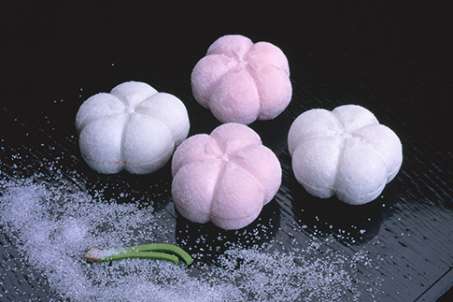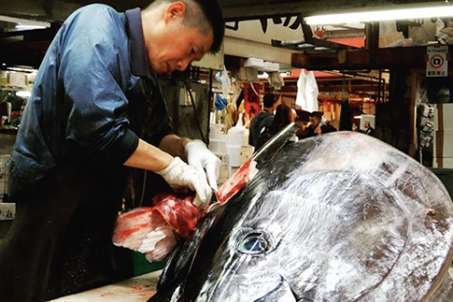
Eat like a locavore: An insider’s guide to Japan’s food scene
Eat like a locavore: An insider’s guide to Japan’s food scene
Australian food writer Jessie Thompson loves all things Japan, especially the cuisine. In fact, she loves it so much she moved from Melbourne to Tokyo in order to be surrounded by the food and culture she loves so much. Here, we catch up with Jessie to get the lowdown on where to find Japan’s best food and drink – from cheap eats to fusion foods, market fare and beyond.

Jessie Thompson
How did you end up living and working in Japan?
I moved to Japan about 18 months ago. I’ve always been interested in Japanese food and culture. I originally came here to study patisserie but I completely fell in love with Japan. I was lucky enough to find a job and ended up staying.
What makes Japan such a cool place to visit?
For me, Japan is such a cool place because you get the old culture with the new culture everywhere. For example I work in Tokyo near the Kanda Shrine which is hundreds of years old and hosts many traditional festivals throughout the year but then around the corner there’s an area called Akihabara which is a crazy, intense, electric town full of flashing lights and maid cafes. To have that within five minutes of each other is quite amazing. There’s traditional districts but then you also get craft breweries, standing sake bars and artisan bakeries. To have everything available and so easily accessible is so incredible.

Akihabara
Where are some of your favourite places to hang out?
It’s so hard to choose a favourite neighbourhood as each has something different. There’s old school Yanaka, there’s Shimbashi that is salaryman central, there’s Harajuku full of hip people and pop culture, and Omotesando which is an upmarket neighbourhood. There’s a farmer’s market there on the weekend. Stallholders from all over Japan come and sell seasonal produce, there’s also DJs and you can walk around with a beer in your hand.

Harajuku
Any favourite dishes?
Wagashi (Japanese sweets) are ubiquitous here but easy to miss if you’re a visitor and don’t know to look out for them. You’ll find them at convenience stores (they’re the little, squishy round treats) but you’ll also find them at speciality shops that sell more elaborate varieties using ingredients like rice flour and bean paste. They’re decorative, seasonal treats and well worth trying. Ramen gets all the attention but soba is where it’s at for me. Soba is made from buckwheat and it has a real earthy taste to it. You can serve it with tempura, in a bowl with soup or just on its own dipped in soy sauce. There are so many customs around eating soba too. Like eating toshikoshi soba on New Year’s Eve.

Wagashi
What types of foods from other countries can be found in Japan?
Curry doesn’t really sounds Japanese but it’s one of those foreign foods they’ve taken and really owned it. It’s a little bit sweeter and it comes in a lot of different forms. You can get a soup curry with meat and vegetables but you can also get curry over a hamburger steak with rice.
Where do you take visitors to eat?
The first thing I do when I have visitors is take them to a convenience store. It sounds a little strange but the convenience stores here are a mini version of Japanese food culture. It’s seasonal and everything is fresh. In winter you can get warming dashi broths. The sandwich section has crazy fusion sandwiches like whipped cream and fresh fruit sandwiches. The pasta section is just a whole other world of its own. You can find a convenience store on almost every block in Tokyo. Sometimes it’s a little too convenient!
I also always take friends to a standing sushi bar in Shibuya. It’s awesome – they have jazz music playing and you stand around watching the chefs make the sushi. It’s cheap and of incredible quality.
What food trends are currently emerging in Japan?
We’re beginning to see the emergence of food truck culture here. Linking in with global food trends, we’re also seeing a throwback to traditional cooking techniques in Japan. Pickling is really big again. There’s also a team of sake makers from the Akita Prefecture doing new and interesting things with sake. Like ageing it in oak barrels and polishing the rice grain right down to tiny percentages. There’s also sparkling sake and sake made with yoghurt. So there’s lot of hot trends coming up with sake with is pretty controversial considering how old school sake production generally has been in the past.

Food trucks
What’s one thing every visitor to Tokyo must do?
I love visiting the Tsukiji Fish Market. It’s a must-see and is on all travel hot lists for a good reason. It’s a great excuse to eat sushi and drink beer for breakfast! Aside from sushi you can walk around and eat grilled fish on sticks, fresh scallops and giant oysters. Every time I go there I swear I find something new.

Tsukiji Market



















































